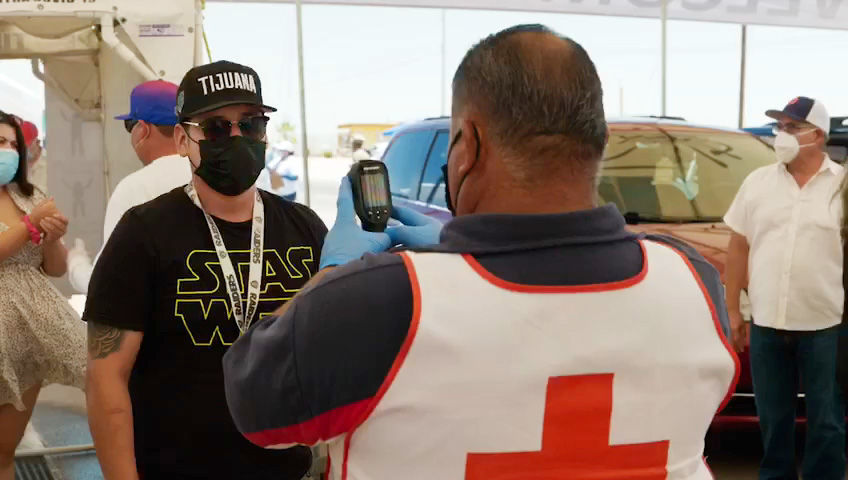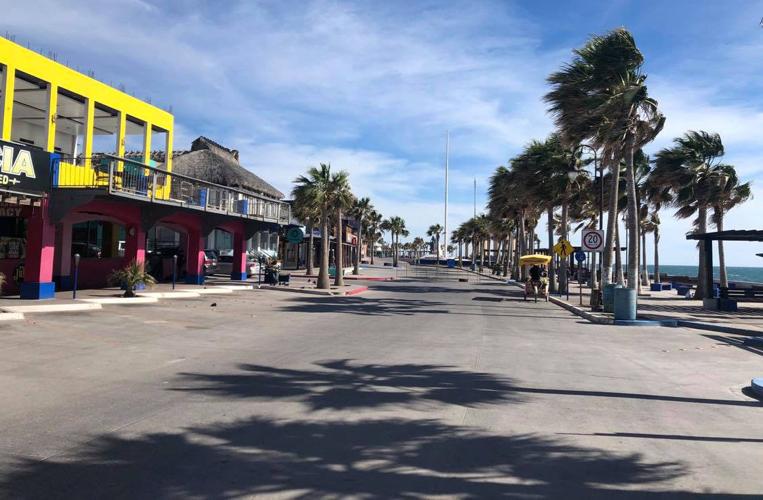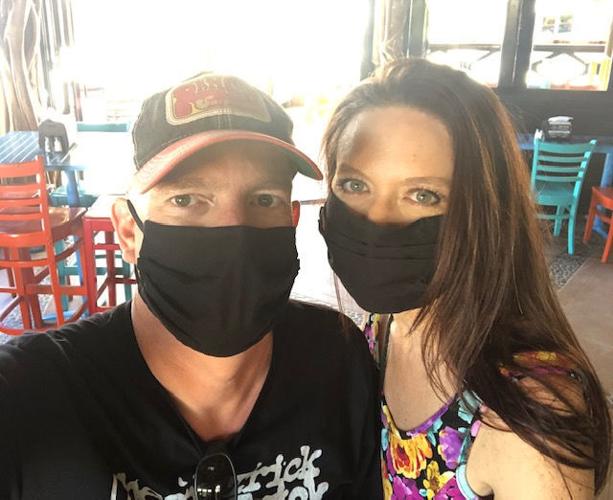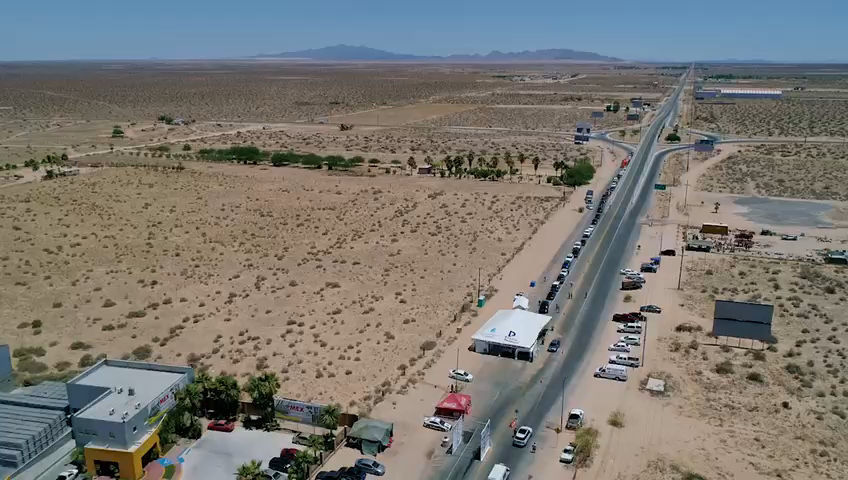After months of isolation, the Sonoran town known as “Arizona’s beach” is open to tourists again — but the tourist experience is far different than it was pre-coronavirus.
While beaches and bars remain closed, visitors to Puerto Peñasco, also called Rocky Point, can still swim in resort pools, eat in restaurants operating at limited capacity, walk the boardwalk and engage in outdoor activities like fishing or riding ATVs. Tourists must abide by a 10 p.m. curfew, alcohol sales are prohibited after 6 p.m., and masks are mandatory in public.
It’s all intended to keep COVID-19 at bay in a town that has had a total of 14 confirmed cases of coronavirus and one death as of Thursday.
“Coming to Peñasco may not be the vacation you remember right now, because of this contingency, but it will definitely be a safe and healthy one,” Puerto Peñasco Mayor Kiko Munro said.
“All we ask is that whenever you’re here, you respect the protocols and respect our community.”
A complete list of health protocols for tourists is available on the town’s tourism website, cometorockypoint.com.
The current phase of Puerto Peñasco’s gradual reopening plan took effect on June 16, welcoming tourists for the first time since the city shut down in mid-March. During the shutdown, health officials focused on educating the working population on health and safety protocols, to prepare for a responsible reopening, Munro said. Now they’re keeping a watchful eye on surging coronavirus cases north of the border.
“Peñasco is one of the safest spots to visit right now in the region, and we intend to keep it that way,” he said.
Checkpoint procedure
To enter Puerto Peñasco, tourists must pass through a checkpoint where navy and National Guard members will ask questions and do a temperature check.
Anyone with a high temperature will get a rapid coronavirus test on the spot, said Hector Vazquez, president of Puerto Peñasco’s Office of Conventions and Visitors.
At the checkpoint, tourist officials will ask for proof that travelers have a reservation at an approved hotel which has been certified in proper health protocol. Most travelers will also pass through a sanitation tunnel, in which they are sprayed with a disinfectant.
Mesa residents Debbie Langolf and her husband, Rob, visited Puerto Peñasco last weekend and said the checkpoint process took under 30 minutes. At the city’s grocery stores and restaurants, workers took the couple’s temperatures, offered antibacterial hand gel and, in one location, asked them to step on sanitizing mats to clean the soles of their shoes, she said.
“I completely understand what they’re trying to do,” said Langolf, 48. “We just wanted to get down there to have a little sun and relaxation. If we have to go through a little bit of extra protocol, that’s fine by me.”
The U.S.-Mexico border is still closed to nonessential travel, but Langolf said she had no trouble crossing into Mexico. Mexican border officials at the Lukeville crossing only asked to look in the back of her vehicle.
Upon her return, a U.S. Border Patrol agent gave a stern lecture about engaging in nonessential travel south, but she and her husband were allowed to cross back into the states, Langolf said.
U.S. citizens are permitted to return to the United States under the U.S. Customs and Border Protection order banning nonessential travel.
During their quiet, relaxing weekend in Puerto Peñasco, Langolf said she and her husband tried to support local businesses as much as possible.
“They’re struggling down there,” she said. “We tried to tip big where we could and buy stuff that we didn’t necessarily need. We wanted to support them.”
COVID-19 surge in Arizona
Since Arizona’s stay-at-home order expired in mid-May, the state has experienced a dramatic rise in COVID-19 cases, according to Arizona Department of Health Services data.
Puerto Peñasco’s mayor said he’s seen worrisome images of Arizona residents failing to socially distance since the state began reopening.
“I saw the large queues outside the stores, people not wearing face masks. I think that was a factor for this outbreak,” Munro said. “We’re trying to prevent that” in Puerto Peñasco.
Arizona surpassed 70,000 total confirmed COVID-19 cases on Saturday — more than double the figure from two weeks before and more than five times the 13,169 total cases on May 15. Some of the increase is due to more COVID-19 testing, but the percentage of tests with a positive result is also rising, indicating more community spread, Arizona Gov. Doug Ducey said Thursday in his weekly coronavirus news conference.
Ducey has encouraged Arizona residents to maintain a healthy social distance from others, stay home when possible and wear masks in public.
But until recently, local governments were prohibited from actually requiring masks. Ducey changed course on June 17, allowing local leaders to implement mask mandates that are now in place across much of the state, including Tucson and Pima County.
“The rate of the spread of this virus is unacceptable, and it’s time for us to step up our actions and our personal responsibilities regarding this virus,” Ducey said during the Thursday news conference.
“I want to enlist every Arizonan in this battle. … If you will wear a mask, that will make a real difference in slowing the spread of this virus.”
Financial hit
The coronavirus pandemic hit Puerto Peñasco during the high season, when tourism-based businesses usually make enough revenue to carry them through the slow season, said Jose Flores, who owns Boo Bar restaurant in Puerto Peñasco. The restaurant is currently open only on weekends, when there’s enough business to justify the cost of operating, he said.
“We’ve taken a hit like everybody else,” said Flores, 43, who was born in Sonora but grew up in Oracle, Arizona. He opened Boo Bar restaurant in 2006.
Currently, Puerto Peñasco hotels are only allowed to operate at 40% capacity, and resorts can operate at 70% capacity, Vazquez said. Annual income from lodging revenue is projected to drop from $100 million last year to about $40 million this year, he said.
The Mexican government has offered little financial help to businesses and individuals trying to survive in quarantine. Flores said the government offered zero-interest loans of $50,000 pesos, or about $2,200 U.S. dollars, to assist medium-sized businesses affected by the pandemic. Flores said he applied six weeks ago but hasn’t received a response yet. Despite the financial hit, Flores said, “I am really proud of our city officials and what they’ve done from the very beginning. They kept us all healthy by isolating the whole town.”
But Flores said he’s braced for another possible lockdown, as tourists arrive from cities where the virus is widespread.
“Unfortunately, Arizona’s numbers are through the roof,” he said. “I feel like it hasn’t been taken as seriously as it should be.”
When he sees images of Arizonans congregating in large groups without masks, Flores said he worries another shutdown is looming.
“I want to wring them by their neck and say, ‘Our government is looking at what you guys are doing,’” he said.
Munro, the mayor, said officials will decide whether to continue Puerto Peñasco’s reopening based on how the pandemic plays out locally in the coming days, not based on Arizona’s case numbers.
If coronavirus infections start rising in Puerto Peñasco, officials will delay further relaxation of its health protocols and may heighten restrictions again, he said.
“We do not have clinical capacity to manage a large outbreak,” Munro said. The nearest hospital equipped to treat COVID-19 patients is almost three hours away in San Luis Rio Colorado, which is experiencing one of the worst coronavirus outbreaks in Sonora, Mexico. Munro said local officials are trying to balance the health risks to residents against the economic devastation that would come from a longer shutdown.
“It’s a risk we’re taking” by reopening the city, Munro said. “We understand that, but there’s no other way around this. The other alternative is starvation and social chaos. We need to find a balance between both realities, the economic and the health.”







